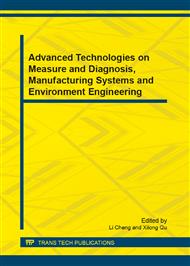p.215
p.219
p.224
p.229
p.234
p.239
p.244
p.248
p.255
Friction Process Analysis and Ring Structure Improvement of Piston Rings in MTU396 Diesel
Abstract:
Based on combustion pressure, the dynamic model was established by using AVL Excite Piston and Rings. Relative axial position and wear loss of rectangular piston ring in a work circulation were analyzed. Based on the shape of the rectangular ring outer side after abrasion, the piston ring cross sections were designed to barrel and tapered shape. Results indicate that improved gas rings are suffered substantially decreased friction. The friction of the first gas ring is less than 100N, and the second ring is even less than 20N. At the upper dead point in the compression stroke, the oil film thickness reaches the minimum value and the piston rings do not pump oil to the cylinder combustion chamber.
Info:
Periodical:
Pages:
234-238
Citation:
Online since:
June 2013
Authors:
Keywords:
Price:
Сopyright:
© 2013 Trans Tech Publications Ltd. All Rights Reserved
Share:
Citation:


